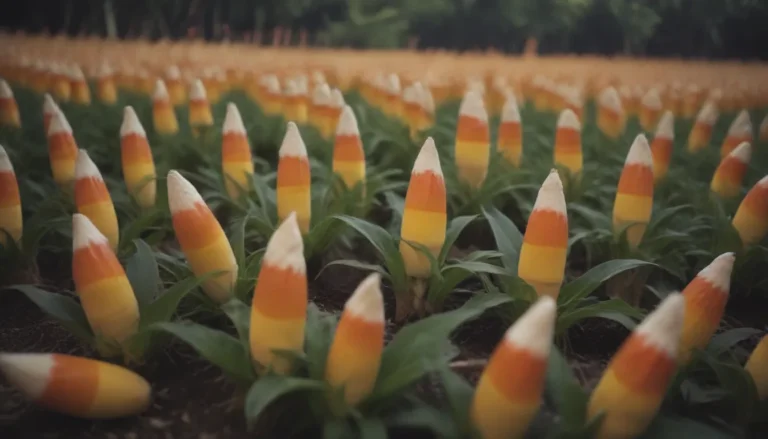Everything You Need to Know About Fertilizing Your Lawn

Are you wondering how often you should be fertilizing your lawn to keep it looking lush and green all year round? The answer may not be as straightforward as you think. There are several factors to consider when it comes to fertilizing your lawn, from the type of fertilizer you use to the type of grass you have and even the season. In this comprehensive guide, we’ll break down everything you need to know about fertilizing your lawn to help you achieve the perfect green space you’ve always dreamed of.
Why Fertilization Is Important
Before we dive into how often you should fertilize your lawn, let’s first understand why fertilization is crucial for the health and growth of your grass. Lawn fertilizers contain three major nutrients – nitrogen (N), phosphorus (P), and potassium (K) – which are essential for the development of strong roots, healthy leaves, and overall plant growth. Nitrogen is the primary nutrient responsible for leaf growth, while phosphorus aids in root growth and potassium helps with water and nutrient absorption.
How Much and Which Fertilizer to Use
When it comes to choosing the right fertilizer for your lawn, you’ll come across various options, including granular slow-release, liquid water-soluble, organic, and synthetic fertilizers. Granular slow-release fertilizers are often recommended because they provide a steady release of nutrients over an extended period, ensuring your grass gets the nourishment it needs consistently.
To determine how much fertilizer to use, it’s best to follow the instructions on the fertilizer label. In general, aim to apply no more than one pound of nitrogen per 1,000 square feet of lawn at a time. The exact amount of fertilizer you’ll need will depend on the percentage of nitrogen in the fertilizer you choose. Doing a soil test is the most accurate way to determine your lawn’s specific nutrient needs and avoid overfertilization.
Low-Maintenance vs. High-Maintenance Lawns
The level of maintenance you’re willing to commit to your lawn will play a significant role in how often you should fertilize. For high-maintenance lawns that require constant care and pristine appearance, using conventional synthetic fertilizers at regular intervals is often necessary. On the other hand, low-maintenance lawns can thrive with organic fertilizers and by allowing grass clippings to decompose naturally to provide essential nutrients.
No matter which type of lawn you have, a good start is essential for healthy growth. For newly seeded lawns, consider using a turf-builder or starter fertilizer to promote strong root development and ensure your grass gets off to a great start.
Warm-Season vs. Cool-Season Grasses
The type of grass you have will also determine the best fertilization schedule for your lawn. Cool-season grasses, such as Kentucky bluegrass and tall fescue, prefer to be fertilized twice a year – in the spring and fall. On the other hand, warm-season grasses, like bermudagrass and St. Augustine grass, also benefit from semi-annual fertilization, with slightly different timing based on their growth patterns.
Fertilizing cool-season grasses in the late spring and early fall helps promote lush growth and strong root systems. For warm-season grasses, fertilizing in the early spring and late summer or early fall can help replenish nutrients and prepare the grass for the winter months.
Best Practices for Fertilizing
In addition to knowing when to fertilize, it’s essential to consider best practices to ensure your lawn receives the maximum benefit from each application. Here are some tips to keep in mind:
- Fertilize in the morning when the grass is slightly damp from dew but not wet.
- Ensure the grass is dry enough so that the granules fall between the blades of grass and onto the soil.
- Water in the fertilizer within a day or two of application to prevent damage.
- Keep an eye on the weather forecast and avoid fertilizing before a heavy rainstorm.
Creating a lawn fertilizing schedule can help you stay organized and ensure your lawn receives the proper care throughout the year. However, be flexible with your schedule and adjust based on weather conditions and the needs of your grass. If you suspect your lawn is suffering from overfertilization, look for signs such as patchy growth, pest infestations, or fertilizer runoff.
Conclusion
Fertilizing your lawn is an essential part of maintaining a healthy, vibrant green space for you and your family to enjoy. By understanding the different factors that influence fertilization, from the type of grass you have to the timing of applications, you can ensure your lawn receives the nutrients it needs to thrive. Remember to consult with your local County Extension Office for soil testing and personalized recommendations for fertilizing your lawn. With the right approach to fertilization, you can have a beautiful, lush lawn that will be the envy of your neighborhood.





